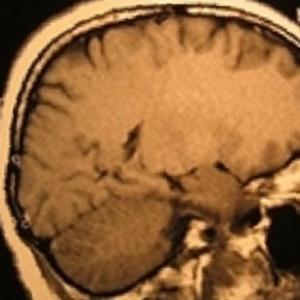How Long Does It Take to Reach Rem Sleep
REM sleep is a stage of sleep that is characterized by low muscle tone, rapid eye movements and dreams. It is present in all mammals and has unique physiologic properties that distinguish it from non-REM sleep.
Key Points about REM sleep:
- Associated with dreams
- Rapid eye movements
- Muscles are paralyzed
About REM Sleep
This stage of sleep is also known as 'paradoxical sleep,' or 'desynchronized sleep', due to the physiological similarities to a person's waking states; which includes low-voltage, rapid, desynchronized brainwaves. It's believed that the chemical and electrical activity that regulate this sleep phase originate in the brain stem, and this is most notably characterized by a combination of an abundance of acetylcholine (a neurotransmitter), and the almost complete absence of serotonin, histamine, and norepinephrine (monoamine neurotransmitters). (1)
The punctuated REM sleep is immediately preceded by ponto-geniculo-occipital (PGO) waves, which are electrical bursts of activity originating from the brainstem. Approximately every six seconds during the transition from deep to paradoxical sleep, these waves occur in clusters and last for between one and two minutes. It's when they move into the visual cortex that they exhibit their highest amplitude, thus causing the rapid eye movements in paradoxical sleep.
REM Sleep and Brain Energy
 In REM sleep, brain energy as measured by glucose and oxygen metabolism, equals or exceeds energy-use in waking. When compared to slow-wave deep sleep, both paradoxical and waking sleep involve higher use of acetylcholine (the neurotransmitter) which may well explain the faster brainwaves. Monoamine neurotransmitters serotonin, histamine, and norepinephrine are completely unavailable. (2)
In REM sleep, brain energy as measured by glucose and oxygen metabolism, equals or exceeds energy-use in waking. When compared to slow-wave deep sleep, both paradoxical and waking sleep involve higher use of acetylcholine (the neurotransmitter) which may well explain the faster brainwaves. Monoamine neurotransmitters serotonin, histamine, and norepinephrine are completely unavailable. (2)
It's been discovered that injections of acetylcholinesterase inhibitor can induce paradoxical sleep in both humans and other animals already experiencing slow-wave sleep. This inhibitor effectively increases available acetylcholine. Carbachol has a similar influence, mimicking the effect of acetylcholine on neurons. The same injections in waking humans produce paradoxical sleep, but only when the monamine neurotransmitters are already depleted.
Gamma-Aminobutyric Acid (GABA) and Orexin are two other neurotransmitters that appear to promote wakefulness, decrease during deep sleep, and prevent paradoxical sleep. The brain's chemical changes indicate continuing periodic oscillation, unlike the sudden changes in electrical patterns.
The Role of the Brain Stem in REM Sleep
During REM sleep, neural activity appears to originate in the brainstem, especially in the locus coeruleus and the pontine tegmentum.
As per the activation synthesis theory suggested by Allan Hobson and Robert McCarley in 1975-1977, controlling REM sleep involves REM-on and REM-off neuron pathways in the brainstem. REM-on neurons are mainly cholinergic, meaning that they involve acetylcholine; while REM-off neurons activate noradrenaline and serotonin, which, among other functions overpower the REM-on neurons. It was suggested by Hobson and McCarley that the REM-on neurons stimulate the REM-off neurons, thus becoming the mechanism for the cycling that occurs between REM and non-REM sleep. Lotka-Volterra equations were used to explain this cyclical inverse relationship. (3)
In 1981, Michael Jouvet and Kayuza Sakai proposed a similar model. It appears that during both wakefulness and REM, acetylcholine manifests in the cortex equally; but during REM it appears in higher concentrations in the brain stem.
Withdrawing GABA and Orexin may explain the absence of the other excitatory neurotransmitters. Positron emission tomography was used in research in the 1990s and confirmed the role of the brain stem. This research also suggested that the paralimbic and limbic systems within the forebrain, which are generally connected with emotion, showed greater activation than other areas.
Why is REM Sleep Important
REM sleep, or Rapid Eye Movement Sleep is one of the stages of sleep. It is the stage of sleep most associated with dreaming. During REM sleep the brain and body act very different than they do during other stages of sleep. During this stage of sleep the skeletal muscles act as if they are paralyzed. In fact all voluntary muscles, except for eye muscles are atonic, or without movement. This probably had some evolutionary benefit as it protected us and others from injury, as we would otherwise act out our dreams. (4)
During REM sleep, the brain is more active than during other stages of sleep. The EEG, or electroencephalogram, resembles wake time. Of course, the eyes show a distinct pattern on the sleep study which demonstrates quick eye movements, hence the name. The skeletal muscles sometime show brief twitches which may be in phase with the eye movements.
Having trouble sleeping
REM sleep is an important part of your sleep cycle, sleep in general is incredibly important for your overall health and wellbeing. If you are having persistent difficulties sleeping, one solution could be Cognitive Behavioral Therapy (CBT-I), and online program that can help you identify the root cause of your sleep problem. Sleepstation can provide you with an effective step-by-step plan to recover your sleep.
What are dreams and Why do we dream? This is not easily answered. There are several theories about the significance of dream. One belief is that dreams are the brains way of processing and storing pieces of information relevant to previous events.
- Author
- Recent Posts
Board-certified sleep M.D. physicians, scientists, editors and writers for ASA.
How Long Does It Take to Reach Rem Sleep
Source: https://www.sleepassociation.org/about-sleep/stages-of-sleep/rem-sleep/
